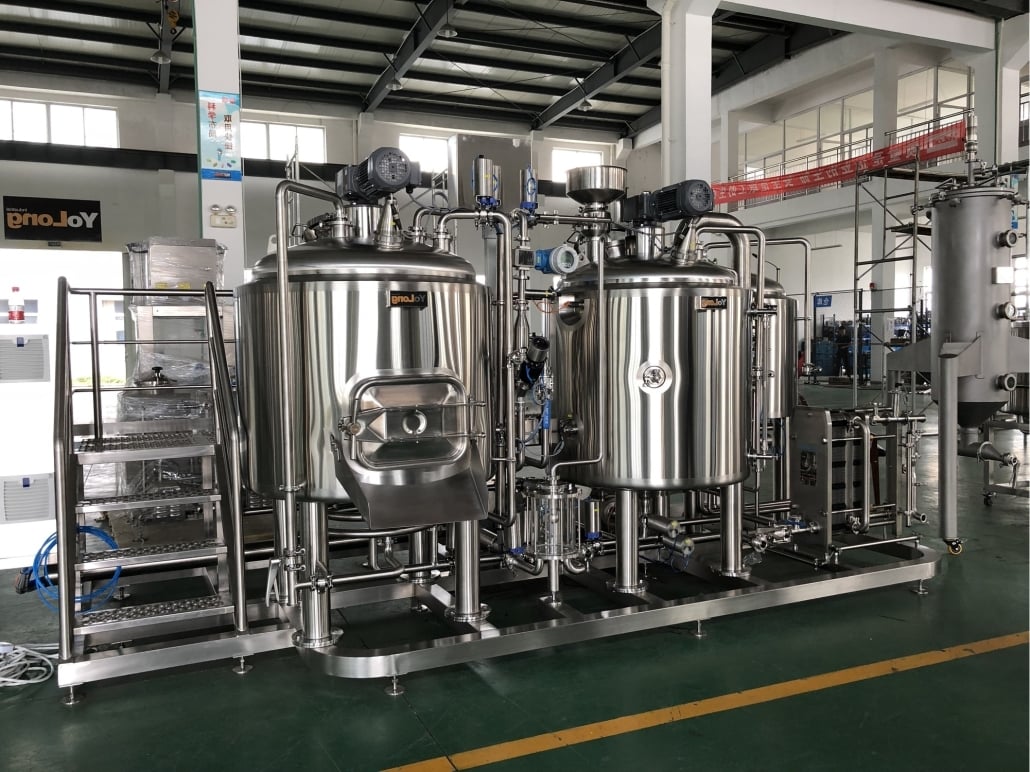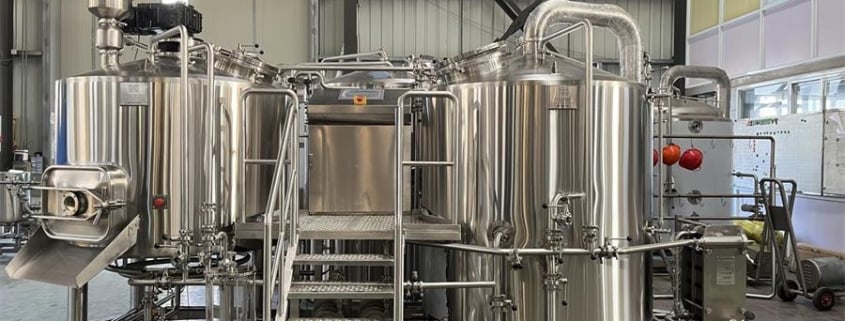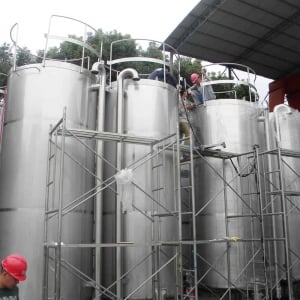Best Brewing Equipment
Brewing your own beer is an art form, a craft that requires the right tools to achieve the perfect brew. Whether you’re a homebrewer looking to expand your setup or a commercial brewer aiming for scalability and efficiency, choosing the best brewing equipment is crucial. In this comprehensive guide, we will explore the key details about brewing equipment, offer an equipment guide, detail the brewing process, and provide valuable insights on suppliers, installation, operation, and maintenance.
Overview of Brewing Equipment
Brewing beer involves multiple steps, from mashing the grains to fermenting the wort. Each step requires specific equipment to ensure the best results. The quality and type of equipment can significantly impact the taste, consistency, and quality of your beer. This guide covers everything from essential homebrewing kits to advanced commercial systems, helping you make informed decisions based on your needs and budget.

Brewing Equipment Guide
Brewing equipment can be categorized into various types based on their use, capacity, design, and customization options. Here, we’ll break down the essential components and advanced systems for both home and commercial brewing.
Essential Brewing Equipment
- Mash Tuns: Used for mixing milled grain with hot water.
- Boil Kettles: Essential for boiling the wort.
- Fermenters: Vessels where wort ferments into beer.
- Heat Exchangers: Cool the wort quickly after boiling.
- Pumps and Tubing: Facilitate the transfer of liquids.
- Cleaning Equipment: Maintain hygiene and prevent contamination.
Advanced Brewing Systems
- Automated Brewing Systems: Offer precision and ease of use.
- Conical Fermenters: Allow for easy removal of yeast and sediment.
- Glycol Chillers: Maintain precise temperature control.
- Brewing Control Software: Helps monitor and control the brewing process.
- Customizable Brew Houses: Tailored to specific brewing needs and scales.
Equipment Types
| Equipment Type | Description |
|---|---|
| Mash Tuns | Vessels where grain is mixed with water to convert starches to sugars. |
| Boil Kettles | Used to boil the wort and add hops. |
| Fermenters | Containers where fermentation takes place. |
| Heat Exchangers | Devices used to cool the wort quickly post-boil. |
| Pumps and Tubing | Facilitate the movement of liquids through the brewing process. |
| Cleaning Equipment | Tools and solutions for maintaining cleanliness and sanitation in the brewing environment. |
| Automated Brewing Systems | Integrated systems that automate much of the brewing process for consistency and efficiency. |
| Conical Fermenters | Specialized fermenters that allow for easy separation of yeast and sediment. |
| Glycol Chillers | Systems used to precisely control fermentation temperatures. |
| Brewing Control Software | Software platforms that allow brewers to monitor and control their brewing operations digitally. |
| Customizable Brew Houses | Tailored brewing setups that meet specific requirements of the brewer, often scalable for commercial use. |
The Brewing Process
The brewing process consists of several critical steps, each requiring specific equipment to ensure the best results.
Mashing
Mashing is the process of mixing milled grains with hot water to convert starches into fermentable sugars. A mash tun is used for this process. The temperature and duration of the mash can significantly impact the flavor and body of the beer.
Boiling
After mashing, the wort is transferred to a boil kettle where it is boiled and hops are added. This step is crucial for sterilizing the wort and extracting flavors and bitterness from the hops.
Fermentation
Once the boil is complete, the wort needs to be quickly cooled using a heat exchanger before transferring it to a fermenter. In the fermenter, yeast is added to the cooled wort to start the fermentation process. This is where the sugars are converted into alcohol and carbon dioxide.
Conditioning
After fermentation, the beer needs to be conditioned to develop its flavors. This can be done in the fermenter or in a separate conditioning tank. Temperature control is crucial during this stage, and glycol chillers are often used to maintain the desired temperature.
Packaging
Once conditioned, the beer is ready to be packaged. Depending on the scale, this can involve bottling, kegging, or canning. Each packaging method requires specific equipment and considerations.
Capacity, Spaces, Design, and Layout
Choosing the right brewing equipment involves considering capacity, space requirements, design, and layout.
| Parameter | Details |
|---|---|
| Capacity | Ranges from small homebrewing kits (1-5 gallons) to large commercial systems (100+ barrels). |
| Space Requirements | Homebrewing setups can fit in a kitchen or garage, while commercial systems need dedicated brewing spaces or buildings. |
| Design | Homebrewing equipment is often modular and compact, whereas commercial systems are designed for efficiency and scalability. |
| Layout | Effective layout maximizes space utilization and workflow efficiency, tailored to the brewer’s specific needs. |
| Customization | Equipment can be customized to fit unique brewing processes, ingredient handling, and production scales. |

Suppliers and Price Range
Finding the right supplier and understanding the price range is essential for acquiring brewing equipment.
| Supplier | Equipment Offered | Price Range |
|---|---|---|
| Homebrew Supply | Homebrewing kits and accessories | $100 – $2,000 |
| Brewmaster Inc. | Mid-range to advanced brewing systems | $2,000 – $50,000 |
| ProBrew Systems | Large-scale commercial brewing equipment | $50,000 – $500,000+ |
| Craft Kettle | Customizable brewing solutions | $5,000 – $200,000 |
| Ss Brewtech | Innovative home and professional brewing gear | $500 – $20,000 |
Installation, Operation, and Maintenance
Proper installation, operation, and maintenance are key to ensuring the longevity and efficiency of brewing equipment.
| Aspect | Details |
|---|---|
| Installation | Professional installation is recommended for complex systems. Ensures all components are properly set up. |
| Operation | Understanding the operation of each piece of equipment is crucial. Training may be required for advanced systems. |
| Maintenance | Regular cleaning and maintenance are essential to prevent contamination and equipment failure. |
| Troubleshooting | Having a troubleshooting guide or support from the supplier can minimize downtime during issues. |
| Upgrades | Regularly upgrading components can enhance performance and efficiency. |
Choosing the Right Supplier
Selecting the right supplier involves considering various factors such as reputation, support, and customization options.
| Factor | Details |
|---|---|
| Reputation | Look for suppliers with positive reviews and a proven track record in the industry. |
| Support | Ensure the supplier offers excellent customer support and after-sales service. |
| Customization | Ability to customize equipment to meet specific brewing needs. |
| Price | Competitive pricing without compromising on quality. |
| Warranty | Equipment should come with a warranty to protect against defects and issues. |
| Training and Resources | Availability of training resources and manuals to help with equipment use and troubleshooting. |
Pros and Cons of Different Brewing Equipment
Comparing the advantages and limitations of various brewing equipment can help you make an informed decision.
| Equipment | Pros | Cons |
|---|---|---|
| Mash Tuns | Efficient starch conversion, versatile sizes | Requires precise temperature control |
| Boil Kettles | Essential for boiling wort, varying capacities | Can be energy-intensive |
| Fermenters | Critical for fermentation, available in various materials | Requires stringent sanitation |
| Heat Exchangers | Rapid wort cooling, prevents contamination | Can be expensive for high-quality models |
| Automated Systems | Ease of use, precision, consistency | High initial cost, may require technical know-how |
| Conical Fermenters | Easy sediment removal, efficient yeast management | Higher cost compared to standard fermenters |
| Glycol Chillers | Precise temperature control | Requires additional space and investment |
| Brewing Software | Simplifies monitoring and control | May have a learning curve for new users |
| Custom Brew Houses | Tailored to specific needs, scalable | Expensive, longer lead times for delivery and installation |

FAQ
| Question | Answer |
|---|---|
| What is the most essential brewing equipment for beginners? | Beginners should start with a basic homebrewing kit that includes a mash tun, boil kettle, fermenter, and essential accessories. |
| How much does a commercial brewing system cost? | Commercial brewing systems can range from $50,000 to $500,000+ depending on capacity, customization, and additional features. |
| What maintenance is required for brewing equipment? | Regular cleaning and sanitation, periodic inspection of parts, and prompt replacement of worn-out components are crucial for maintenance. |
| Can brewing equipment be customized? | Yes, many suppliers offer customization options to tailor the equipment to specific brewing processes and scales. |
| What factors should be considered when choosing a brewing equipment supplier? | Reputation, customer support, customization options, price, warranty, and available training resources are key factors to consider. |
| Is professional installation necessary for brewing equipment? | For complex systems, professional installation is recommended to ensure all components are correctly set up and functioning properly. |
Conclusion
Choosing the best brewing equipment is essential for producing high-quality beer, whether you’re a hobbyist or a commercial brewer. This guide provides a comprehensive overview of the necessary equipment, the brewing process, and the factors to consider when selecting suppliers and maintaining your setup. By understanding the pros and cons of different equipment types and leveraging the insights provided, you can make informed decisions that enhance your brewing experience and product quality.













